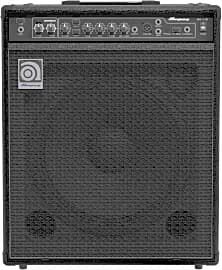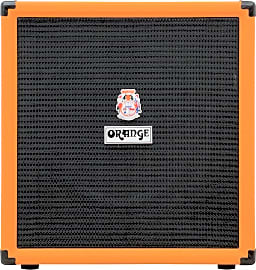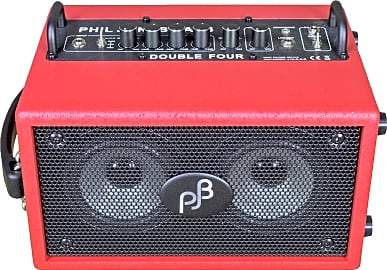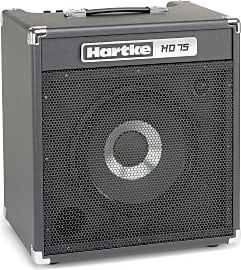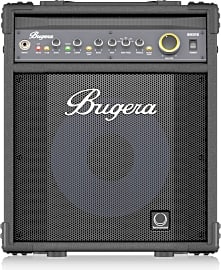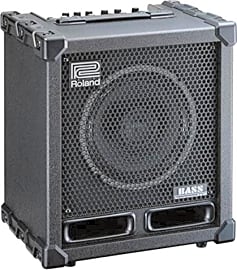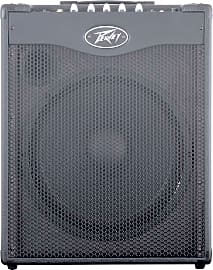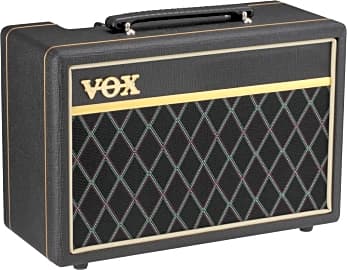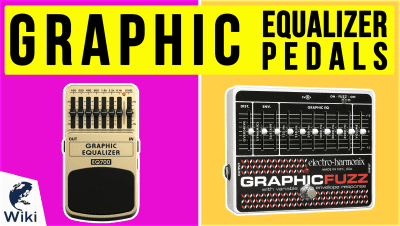The 10 Best Bass Guitar Amplifiers

This wiki has been updated 34 times since it was first published in October of 2016. For any budding Flea or Entwistle out there, we've put together a comprehensive selection of bass guitar amplifiers. Producing deep and rich tones with the power to rumble at the lowest of frequencies, they come in a wide variety of sizes and prices to meet the needs of both practicing beginners and professional gigging musicians of any genre. When users buy our independently chosen editorial selections, we may earn commissions to help fund the Wiki.
Editor's Notes
December 06, 2019:
Bass tone can be a pretty personal thing, with some players preferring to let the bass drum to all the punching, and use their instrument less percussively, and more in tune with the other guitars. Others may prefer to syncopate with their drummers, creating very complex rhythms that require a certain degree of presence with each pluck or strum of the strings. From our perspective, it's easier to get an amp to do the former than it is to do the latter, so we placed a bit of an emphasis on amps that could push into the high end and generate a little more attack than others, as this is something that can easily be toned down with EQ and adjustment to playing style, where there's not much you can do to punch up a flat amp's sound without the intervention of effects pedals. That's why we're such big fans of the Ampeg BA115v2 and the Orange Crush Pix CR100BXT 1x15.
Of course, the Fender Rumble 500 V3 doesn't quite match these in attack, but it's such a fantastically reliable option with such a nuanced, versatile sound that we couldn't help but love it.
Going into the update on this ranking, we expected to find a few more options in the boutique sector, but most of those designers are focused on amp heads, and since we already have a list dedicated to bass amp heads, we wanted to keep our focus here on combos, limiting our special honors to the Epifani Tour 333 Piccolo.
Special Honors
Epifani Tour 333 Piccolo This 350-watt model offers an analog tube emulator that you can activate at the push of a button, as well as a mid cut feature that gives you a little more control over the presence of frequencies that can play a big part in the perceived attack of your instrument. For its power and performance, it's surprisingly small and lightweight. epifani.com
A Point About Counterpoint
Vocal lines will most likely marry very closely to the frequency ranges and rhythmic qualities of these instruments.
If you listen to a lot of different rock bands, you’ll notice something very specific about the ones that are both the most financially successful and the most critically acclaimed. It’s a feature of certain groups that separates them from the pack without calling attention to itself, making Radiohead far superior to Muse, and Talking Heads better than pretty much any other band from that era. What we’re talking about here is the rhythm section.
In most rock bands, the rhythm section consists of the bassist and the drummer, and when those two work together in counterpoint to the guitars and vocals, their bands succeed. Of course, creating that counterpoint takes a little knowhow and patience on the part of the songwriters and the rest of the band.
In order to understand counterpoint, you have to realize that all music is rhythm, not just the rhythm section. All instruments and vocals occupy rhythmic space. They also occupy certain frequency ranges, and if all of those components are mashed together on the same beats within the same limited range, you end up with music that sounds amateurish. The key is to find empty spaces in the rhythm of music as the songwriter composed it and to fill those in with color from another frequency range.
The problem here is that most songs originate on an instrument like a guitar or a piano. Vocal lines will most likely marry very closely to the frequency ranges and rhythmic qualities of these instruments. When the songwriter takes his of her tune to the rhythm players, there isn’t a lot of space for them to play, and they often end up just following the patterns already established.
Writing, then, requires an extra step or two. After bringing the song to the rhythm section and teaching them the changes, the songwriter must shut up. It would be ideal if, at this point, lyrics haven’t yet entered the equation. Let the drums and bass carry the changes for a while, and have the bassist pluck his stings as few times as possible to make those changes apparent, preferably in sync or at play with the rhythms of the bass drum.
Then, and only then should the songwriter begin to reintroduce the guitar or piano, and this should happen piecemeal, one key or one string at a time, so that no unnecessary fodder finds itself haphazardly glued to your opus.
This kind of writing and its ultimate performance in front of crowds requires that the bassist has a high-quality amp. Some bassists will send their instruments through a venue’s PA system as a way to save both a little money and a bit of equipment hauling. One problem here is the lack of control over your sound, but the most crucial shortcoming of this setup is the difficult time your drummer and the rest of your band will have hearing you. By placing a powerful amp close to the drummer on stage or in the practice space, the rhythm section will be more in sync, and the rest of the band can take its cues from it, which, as we’ve covered, is the ideal scenario.
Top-Tier Low-End: Choosing The Best Bass Amp
Evaluating the bass amps on our list should take a backseat to evaluating your sound and its requirements. When you have a good sense of the control you need and the style you play, making the right choice will be a lot easier.
With those two elements combined, you’ll want an amp with some serious watts and simple controls.
For example, if you play primarily classic rock, your bass sound is going to be rather straightforward. Everyone in that era, from the Beatles to Zepplin, took a pretty simple approach to their bass tones. That style also finds itself in a lot of rowdy bars with sub-par PA systems, however. With those two elements combined, you’ll want an amp with some serious watts and simple controls. With more juice, you won’t need to mic the amp unless it’s actually going to improve the sound. With a simple three-band EQ, the experience is practically plug-and-play.
Indie rockers, avant-garde jazz musicians, and other experimental players should look for an amp with a lot of built-in effects. Even if all you do is add a little reverb and chorus to the sound, it can make your instrument stand out. You can afford to sacrifice some power in these genres, as well, since experimental acts — rather unfortunately, I must say — tend to play for smaller crowds. When these acts do break into bigger venues, those engineers almost always have the ability to skillfully mic your amp.
As you can see, a little investigation into the kind of player you are and the type of settings you most often grace with your playing will give you a good idea of which amp you ought to grab.
A Few Extra Points To Specify Your Sound
If you’ve ever listened to Parliament, you know what Bootsy Collins’ bass sounds like. His settings, effects, and playing style were truly unique for his time, and while plenty of imitators have cropped up with similar approaches in the years since, his name comes to mind when you hear them.
Investing in a few good pedals can make a world of difference to your sound, both in broad and narrow strokes.
To create your signature sound, you’ll need more than just the amp you select today. Investing in a few good pedals can make a world of difference to your sound, both in broad and narrow strokes. There are effects pedals out there that are specific to the bass guitar’s natural frequencies, and this is probably where you should look first. Other pedals, however, like tuners and equalizers, can work for multiple instruments.
Don’t be afraid to apply guitar effects pedals to your bass, however. Many of these might compress your sound a little too much, but you can equalize that out with the right settings and pedal combinations to completely expand your range of experimentation.
Try a few different brands and gauges of strings, as well. As you hone in on your tone, the difference between two gauges might be the breakthrough that gives you your signature sound.


